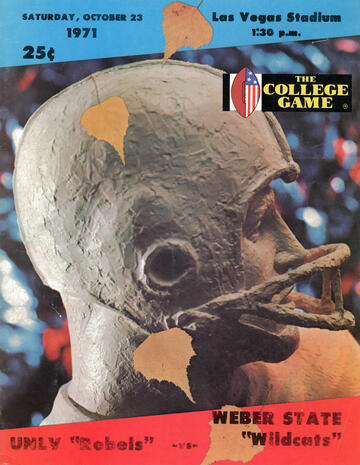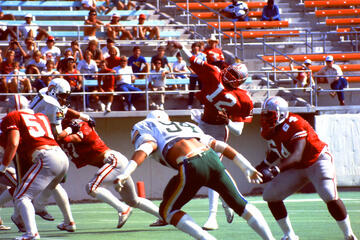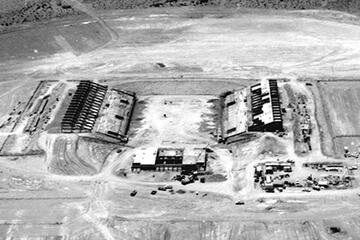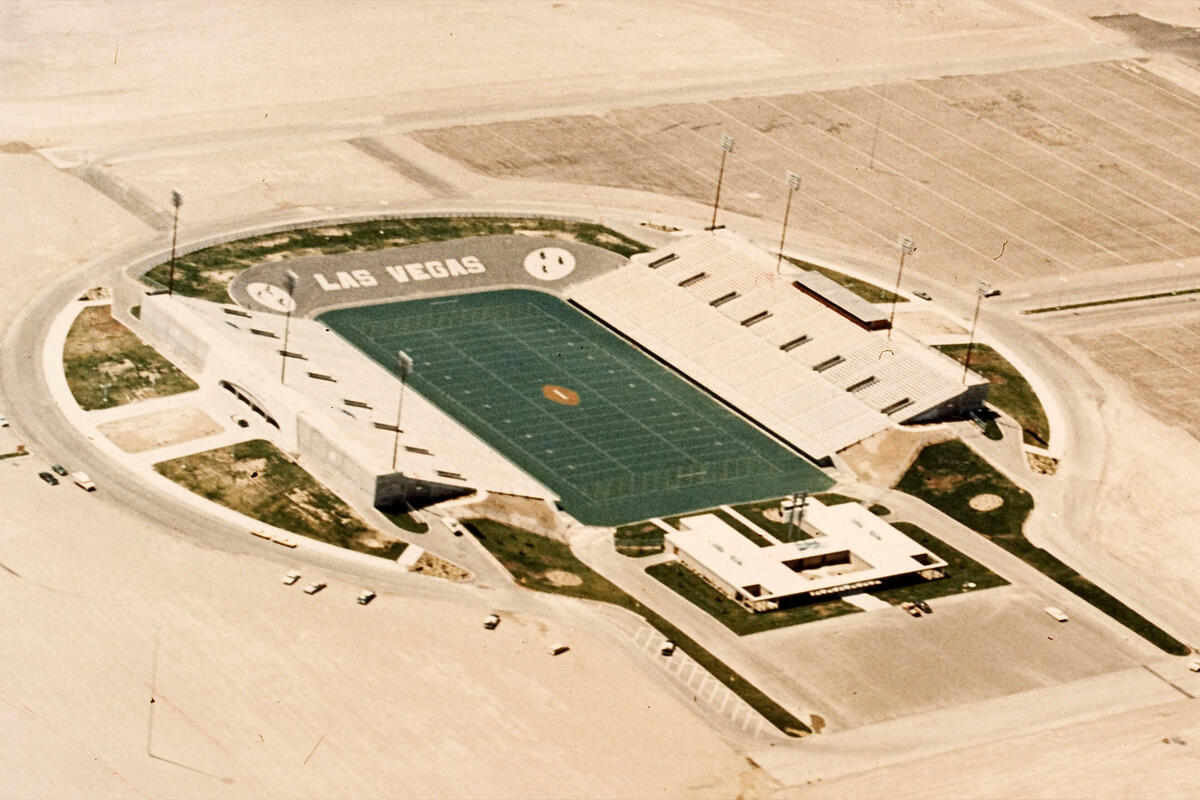The wind whipped through the 11,000-strong crowd in 30 mph gusts on Oct. 23, 1971. The Rebel Yell would later call the game a “Dust Bowl.”
The Weber State Wildcats were in Las Vegas from the Big Sky Conference. A short run and a long field goal put the ‘Cats ahead, 10-0, after the first quarter.
Then in the second, magic. Vince Hart drills a 41-yarder through the uprights. A blocked kick gave UNLV the ball on the Webber 22-yard line, and quarterback Jim Starkes found Greg Brown in the end zone. Minutes later, another Weber turnover let Starkes hit paydirt from the one, and UNLV took its first lead in its first game at its brand new home field, then simply named Las Vegas Stadium.

“We had been playing at Cashman Field,” Nate Hawkins remembers. Hawkins had started that Weber State game as a senior wide receiver. “That field had holes and was dirty. The high school stadiums were better than our stadium. [Moving to Sam Boyd] was a big deal. And we could see the university was going on the up. I was impressed.”
The Wildcats swung things back their way with a third-quarter touchdown and sealed a 30-17 win in the fourth, but UNLV football was on its way to carving out a new identity in the city, anchored on the east side of town.
As Sam Boyd enters its final days, junior quarterback Armani Rogers is in a similar position to Hawkins was decades ago, eager to play in a new stadium as a senior.
Rogers is fond of his first taste of Sam Boyd — an early September 2017 matchup against Howard University, rushing for 87 yards and passing for 220 with a touchdown in the 40-43 loss.
“It was a good experience being able to finally start a football game as a college athlete. When you're coming out of the tunnel for the first time, there's a lot of energy. The fireworks are going off, the motorcycle’s revving, the people in the crowd, just the whole energy.”

In August 2020, Rogers will have the chance to lead the next generation of Rebels into a home that wouldn’t have been possible at any other point in the history of Las Vegas, a shared space with the soon-to-be Las Vegas Raiders currently under construction south of Mandalay Bay.
When he does, he’ll be uniquely suited for it. Rogers grew up around NFL stadiums while his father, Sam, spent seven years at linebacker for the Bills, Chargers, and Falcons.
But even if Rogers has the feel and rhythms of a big stadium programmed into him from a childhood spent on the sidelines before games, the transition can still offer up surprises. When moving from Cashman to Sam Boyd, there was plenty for Hawkins to adjust to, anticipated or not.
“I had to get used to the turf,” Hawkins said. “When you get out there and you fall and you get those turf burns. We had to get [special] shoes. One end of the stadium was open. So we had an advantage of knowing what was going on there because on the opposite end from our locker room, the wind would blow so if you were kicking from our locker room, the ball would get blown back. Instead of gaining 30 yards, 40 yards they'd be blown back 10 yards.”
UNLV will continue to play on artificial turf, so at least the turf transition is minimized (though the Raiders will roll in an entire natural grass field on a tray for their games). Likewise, the technology at Sam Boyd was a huge improvement at the time. A video screen on the scoreboard let players see replays in the aftermath of a down, a massive step up from what they were used to at Cashman, which didn’t display much more than the two teams’ scores.

“I think a closer venue is going to bring more of the fans out,” Hawkins said. “You won't put any hardships on trying to get out to the stadium. [Sam Boyd] was an upgrade and we liked it, but just like then, this new stadium is going to be way better for the university.”
It’s not going to be a bittersweet move for the current squad, either. But Rogers said they’re focused on this season and not talking about the new digs just yet. Those returning next year, however, know what impact it, and the addition of the new training facility, the Fertitta Football Complex, could mean for recruiting.
But just a little bit, Rogers lets himself think about the past.
“Forty-something years here, it feels like it's is like a lot,” Rogers said. “The history that has been on the field, from Randall Cunningham to all the legacy [players] that have been through Sam Boyd. Going to the new stadium, we have to create our own legacy there.”



